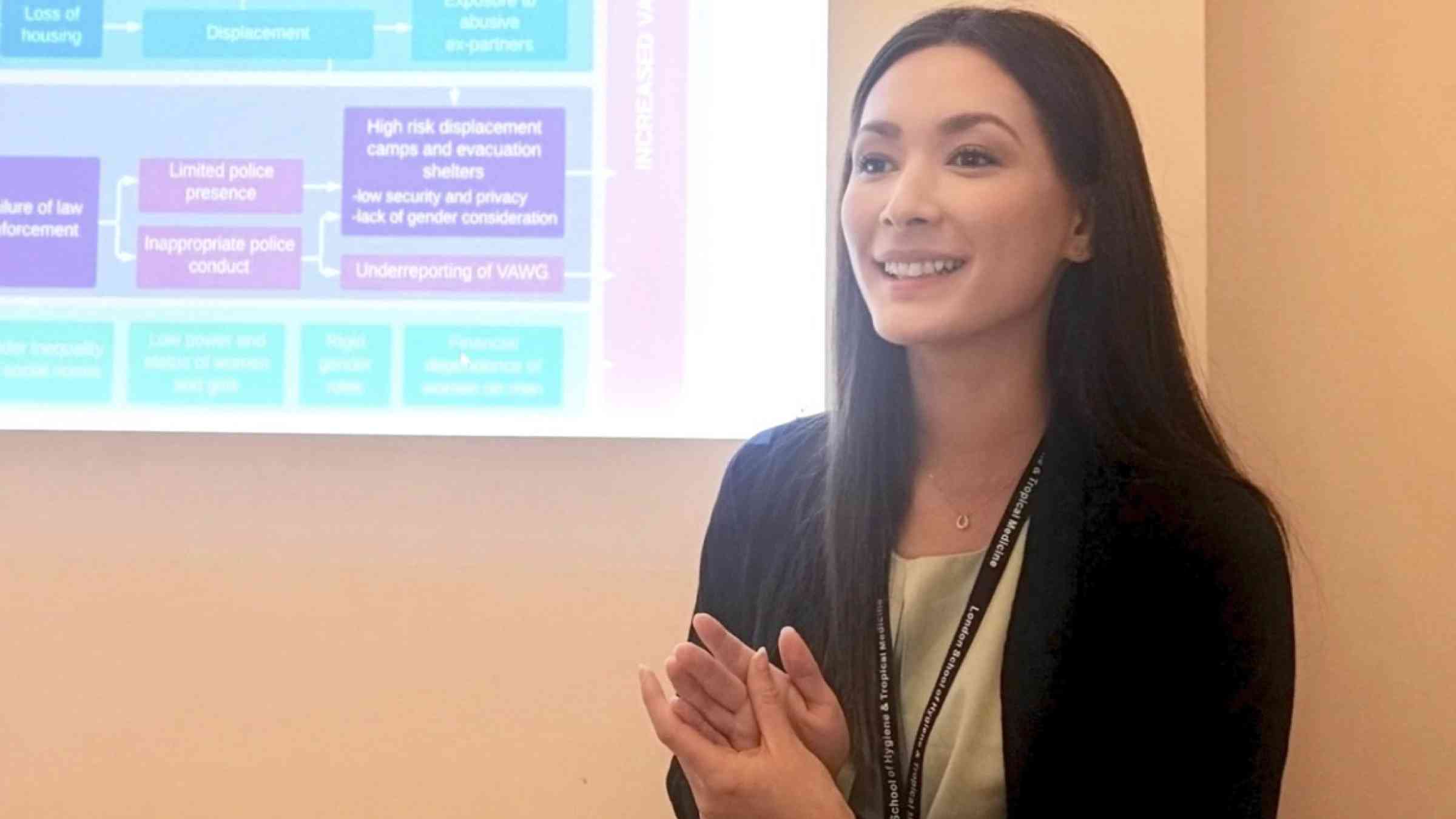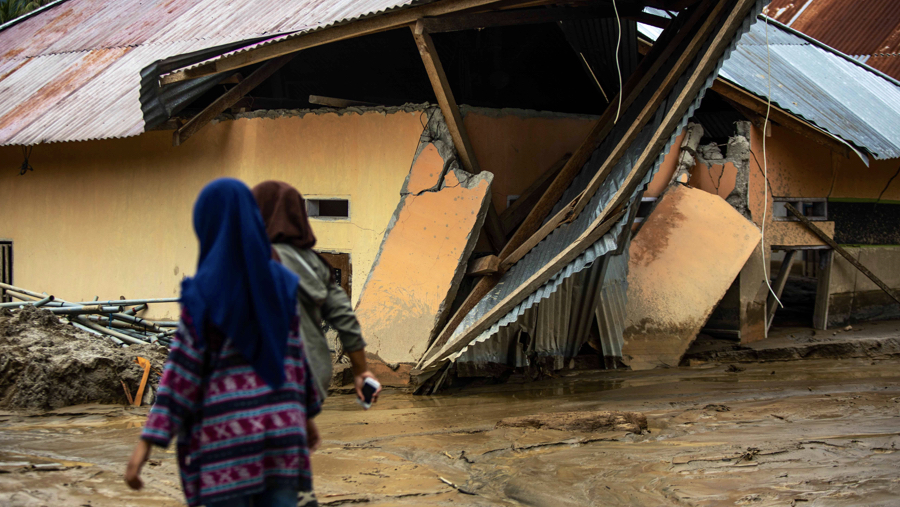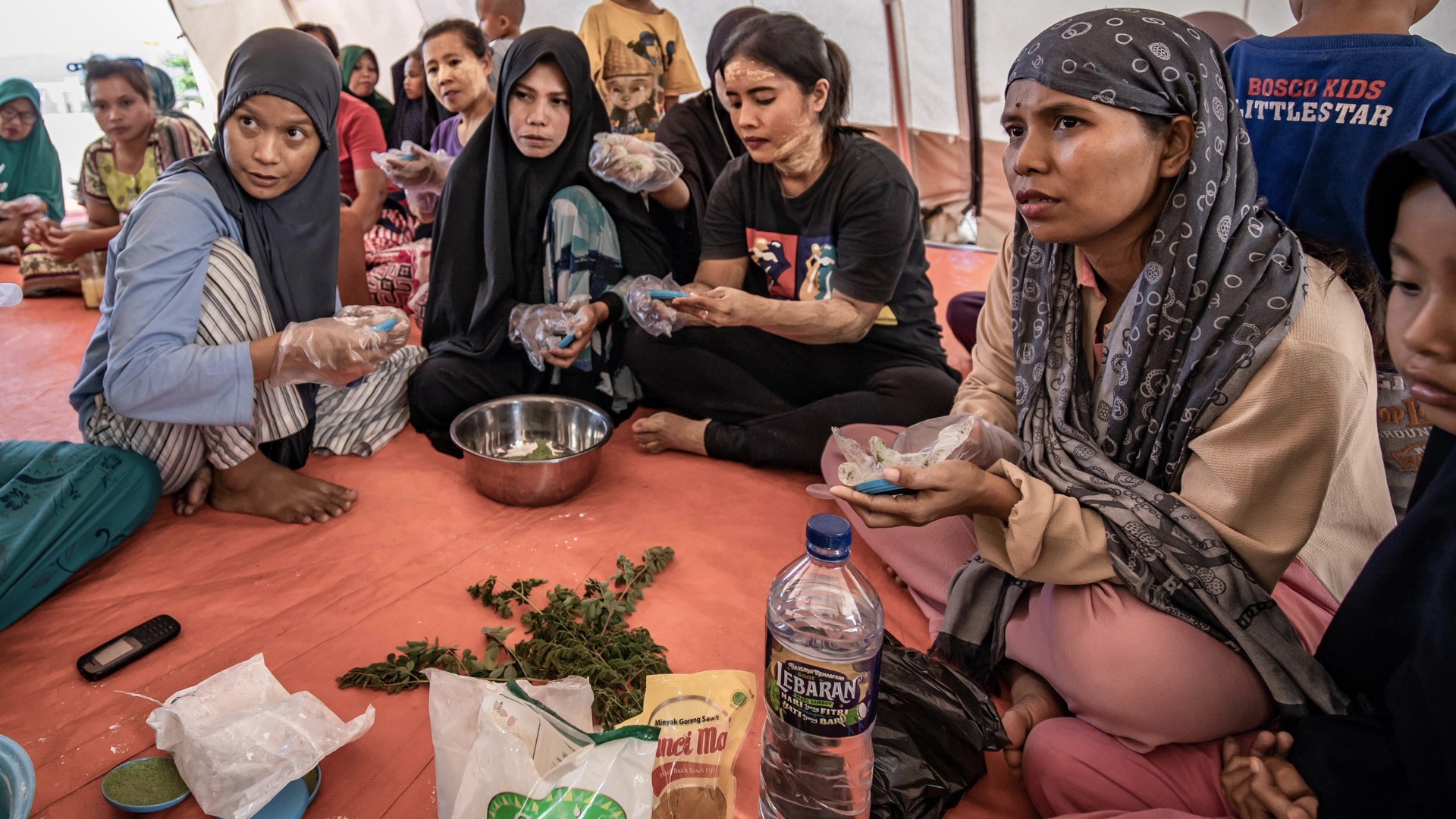Alyssa Thurston: “Engage women & girls as advocates for disaster risk reduction & climate adaptation”

Alyssa grew up in Japan where disasters caused by natural hazards are a part of everyday life. Her interest in the intersection of gender-based violence and disasters began after the earthquake in 2011. “It was overwhelming to hear reports about women and girls–who had already lost family and friends, their homes, and livelihoods to the disaster–being physically, sexually, and psychologically abused in evacuation shelters and in their homes,” she recalls.
She wanted to expand the knowledge base on the disproportionate burden of disasters on women and girls, looking particularly at their experience of post-disaster violence. “Growing up in a disaster-prone country and region,” she says, “I knew I wanted to work to protect women and girls in disaster settings.”
Alyssa says international commitments have made progress in raising awareness on the need for gender responsive approaches to disaster risk reduction policies and strategies. “A lot of countries have demonstrated that they are updating their policies and making them more inclusive but it remains unclear how these policies translate into action.”
Part of the problem is how disaster impacts are defined. “International agreements outline the loss of lives, livelihoods, and economic, social, cultural, and environmental assets of societies,” Alyssa says. “But what about the loss of dignity, bodily autonomy, and the infringement of human rights caused by violence against women and girls in post-disaster context?”
“We count direct loss of life and injury caused by disasters, but what about the severe health consequences of physical, sexual, and psychological violence triggered in these disaster settings?”
“We count direct loss of life and injury caused by disasters, but what about the severe health consequences of physical, sexual, and psychological violence triggered in these disaster settings?”
More needs to be done to recognize GBV as a core disaster management issue. Alyssa thinks one reason policies have failed to support women is because they have not adequately included women in disaster planning. “Disaster management agencies are often rooted in male-dominated national defense agencies,” she says. “Women are not equally represented in these structures.”
Alyssa says when it comes to law enforcement, the prevention of violence against women and girls requires more awareness and training of police, along with efforts to recruit and retain more female officers. Ensuring accessible and reliable reporting mechanisms during a crisis should be a priority as well.
The publication examined the associations between disasters and violence against women and girls. “Disasters can trigger physical, psychological, and sexual violence against women and girls,” she says. “Humanitarian workers are aware that this is happening, but this was the first time that an effort has been made to critically assess the global evidence.”

She says there has been no clear picture of gender-based violence in disasters because of poor measurement of violence and under-reporting due to stigma or feelings of guilt, fear, or shame. “The scope of post-disaster violence is likely much greater than what could be gleaned in the data.”
The research found that an increase of stressors like a decline in mental health and financial or housing insecurity can exacerbate violence against women and girls. While during non-disaster times gender-based violence is experienced in every community “Disasters increase environments that enable violence against women and girls,” Alyssa says. “The failures of law enforcement and low security of displacement camps or evacuation shelters make these settings especially dangerous.”
“Disasters increase environments that enable violence against women and girls. The failures of law enforcement and low security of displacement camps or evacuation shelters make these settings especially dangerous.”
Evidence points to disasters exacerbating the underlying drivers of violence against women and girls: gender inequalities, low status of women and girls, and the financial dependence of women on men. “We found that globally, more than a third of the post-disaster violence was perpetrated by current and former spouses and dating partners,” she notes. Frontline reports have indicated that rates of domestic violence against women and girls have skyrocketed during the pandemic.
Climate change is seeing a rise in the frequency and severity of hazard events. “As populations are increasingly affected by disasters and the impacts of climate change, we need to deepen the understanding of the links between the changing environment and violence against women and girls.”
She says the goal of the research is to inform strategies for disaster management, violence prevention, and appropriate public health responses. Alyssa thinks the pandemic has created unprecedented momentum to improve public health systems. “Effective national COVID-19 responses have required cooperation across government agencies that have not previously worked so closely together,” she says. “This may be the momentum needed to break down silos between national agencies like disaster management, public health, and law enforcement.”
“Creating safe spaces for women and girls, supporting local women’s organizations, and providing psychosocial support should be prioritized in a response.”
While the most effective strategies will be locally and nationally led, Alyssa thinks humanitarian actors can play a critical part in triggering meaningful change. Improving accountability measures like complaints and feedback mechanisms and assistance to survivors should be high on the agenda. “Creating safe spaces for women and girls, supporting local women’s organizations, and providing psychosocial support should be prioritized in a response.”
Ultimately, she aims to shine a light on the approaches and interventions that are most effective in disaster settings. She is hopeful about projects that target women's empowerment to prevent violence, but cautions that there is no panacea for this issue. “There is growing evidence that interventions like cash transfer programs can reduce violence against women and girls, but more research is needed in post-disaster contexts,” she says. “What’s clear is that there are no easy fixes to addressing deeply entrenched gender inequalities and societal norms that cause violence against women and girls.”
She says the first step is recognizing that women and girls are needed to inform gender-responsive policies. “You cannot care about women and girls without including them as key stakeholders,” she says. “Engage women and girls as advocates for disaster risk reduction and climate adaptation. Elevate their status and shift the roles within households and communities, especially in the aftermath of disasters.”

The views expressed in this article are the personal views of Alyssa Thurston and do not necessarily reflect the official positions of the organisations she works with.
Join the Women’s International Network on Disaster Risk Reduction
The Women's International Network on Disaster Risk Reduction (WIN DRR) is a professional network to support women working in disaster risk reduction, in all their diversity. WIN DRR promotes and supports women's leadership in disaster risk reduction across the Asia Pacific region, and aims to reduce the barriers faced by women and empower them to attain leadership and enhance their decision-making in disaster risk reduction. WIN DRR is supported by UNDRR and the Government of Australia.
Learn more
Gender, climate and security: sustaining inclusive peace on the frontlines of climate change
Alyssa Thurston is a Policy Officer at CDAC Network, working to improve communication, community engagement, and accountability to disaster-affected communities. She is part of a research team at the London School of Hygiene and Tropical Medicine that published a global review of the impact of disasters caused by natural hazards on women’s and girls’ risk of violence.